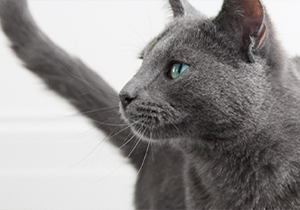Understanding Cat Feeding Behaviour
If you remember Garfield, the orange tabby cat who hates Mondays and enjoys annoying his dog sibling Odie, you are bound to remember how much Garfield loves digging into his favourite Italian delicacy, lasagne. And while there is no end to what Garfield would love for his next lunch, as a cat parent, you must surely know what comfort food is always on the mind of your feline friend!
For any living creature, a balanced diet is always of vital importance and most cat parents are worried about the meal intake of their cats. A normal eating pattern of a cat depends on its age and its breed. For a fully grown cat, it will take at least two servings of cat food a day to be considered a full meal. However, some cat breeds need to be fed almost 6-7 times a day to maintain a healthy life.
As royal as cats are, they are extremely choosy about what they eat. But that doesn’t mean that felines don’t eat things that we mere mortals consider inedible. The ways of cats are as mysterious as themselves! This is why, when it comes to their food, it is normal for new cat parents to be a little conscious of what and how much their feline friend is eating.
The unpredictable eating nature of cats
The nature and attitude of cats are significantly different from other pets. Not only are cats able to convey emotions, but are also capable of displaying a range of emotions. In addition to being introverted and reserved, cats can be exceptionally moody too. Their mood also plays an important role in the cat eating habits. Sometimes they are too cranky to eat and sometimes they want to eat too much. But a correct food schedule is important for cats to avoid health issues, one of them being obesity.
However, this unpredictable eating nature of cats can often be observed in their choice of food as well. While cats are incredibly sophisticated, these adorable furballs can often get into cat eating habits that are not just unusual, but downright weird. However, there is no need to worry just yet, for some of these weird cat habits are considered normal in the feline family, and are also encouraged by feline experts. Learning about these weird cat eating habits will allow you to learn about your feline friend deeply and take note of their general nature and well-being. Mentioned below are some of the common, albeit weird feeding habits of cats.
Weird Eating Habits of Cats
Mentioned below are the 7 most common, yet extremely weird feeding habits of cats that you must know about.
-
Munching Plants
Eating green plants is good and healthy in many human communities. However, cats being carnivorous animals, it might look unusual to see your cat chomping down on green plants or grass. However, as strange as it looks, it is not completely out of place in the feline world. In fact, munching plants and green grass can be beneficial for your cat’s health. It is believed that the wild breed of cats eats green grass to serve their digestive needs as the grass is rich in fibre. Domestic cats too nibble on houseplants for the same reason. In fact, most households with cats prefer having cat-friendly plants like catnip for feline members to munch on. As this habit is completely normal, there is no particular cause for pruning back such habit, however, it is crucial to ensure that only cat-safe plants are within reach of your feline friend since many houseplants are not suitable and toxic for felines.
-
Playing with their food instead of eating
Cats are hunters by nature. In the wild, it is normal for cats to chase down their prey and hunt it for consumption. So, don’t be surprised if your house cat tries to do the same with its food. If you see them swatting at their food and playing around with their meals, it is because they want to chase after their meal before consuming it. This is also believed to be a healthy activity as it allows your feline friend to stay active, burn calories, and avoid health issues like diabetes and obesity. In addition to being a response to their hunting instincts, cats also often play with their food when they are bored.
-
Hogging
Cats can be quite particular about their food, and hogging food is a weird gesture that indicates their love for food. Cats usually follow certain habitual behaviours that can indicate hunger. Most cats continuously meow to let their owners know that they are hungry. Others are not as patient with their meal being served and will immediately start gulping down their food as soon as they have been offered food. Also known as hogging, some cats display this eating habit of quickly gulping down food to avoid having to share a delicious meal with others. However. If your cat is hogging, it is better not to encourage this, as hogging might result in overeating, indigestion, and obesity.
-
Bringing home trophies
It is not uncommon for cats to bring home ‘trophies’ or things they have hunted. These trophies can be of several types, ranging from rocks, dead birds, rats, and more. And your cat bringing home a dead bird might not be the easiest sight to witness, but it is done out of the immense love and affection your feline friend has for you. In the wild, mother cats are generally the ones to hunt down prey and bring it back home to feed their kittens. If your cat is bringing home trophies, it is their way of expressing genuine love, because your cat considers you to be as dear as one of its kittens and is always concerned about your well-being. Having known this, the next time your cat brings home trophies, you can always give them the love they deserve by giving them a quick treat or a nice scratch behind the ears.
-
Eating poop
Beg your pardon, what? Yes exactly! It might sound like such a gross thing, but cats can be caught having their heads in the litter pan. This is clinically termed coprophagia, and this weird cat feeding behaviour normally occurs in mother cats with newborn kittens. Mother cats eating the poop of her children is, however, considered a part of the grooming process. For the other cats, it can be because of several issues including parasites, neurological disorders, or psychological issues. Cats also often eat their poop if they find any undigested substance in it. Though rare, if you see your feline eating its own poop, it might be indicative of several underlying health conditions, such as malnutrition, vitamin deficiency, diabetes, or thyroid disease. Instead of ignoring this strange eating habit, it is a wise idea to get your pet checked for any ailment by a professional veterinarian.
-
Eating non-food items
The condition of eating non-food items is called pica. If your feline furry is seen sucking on wool, fleece or stuffed toys, it could be because they have been weaned early. But it would be really concerning if you see your cat munching on things like bags, plastic, rubber bands, dirt, and soap. Lack of stimulation often leads the cats to do these activities. Other reasons include genetic background, compulsion, dietary needs, etc. To improve this behaviour, you can look into cat toys that contain catnip. Not only will it delight your feline friend, but will also lower the chances of your cat ingesting something that might risk its health.
-
Eating too much and then throwing up
Cats are picky eaters, but due to their weird cat feeding behaviour, they can also be quite greedy when it comes to their favourite food. As a result, when offered their favourite food, most cats are unlikely to stop until they can eat no more. While it is funny to see a cat chomp down on food, it might be a potential risk factor. Not only does overeating lead to health conditions like obesity, diabetes, and renal problems, but it also puts considerable pressure on the cat’s heart. And if the cat is unable to digest all that it has eaten, it might lead to indigestion, causing the cat to throw up. To avoid this, make sure that your cat receives food in the right portions, which gives it all the necessary nutrients, and at the same time, is easy to digest.
Conclusion
If your cat's weird eating habits have led you to question its sanity, here’s what you can do as a supportive cat parent. Not only is limitless love and affection a good way to let your cat know that no matter what, you have its back, but with Sheba’s Premium Wet Cat Food, you can provide them with a delicious, nutrition-rich alternative that will have your feline friend licking its bowl clean! Sheba’s Premium Cat Food is the perfect choice for your sophisticated furry friend, for it is available in a wide range, from delicious wet cat food like Pouch Chicken to creamy treat sticks like Melty Tuna flavour.
FAQs
-
Why does my cat eat random things off the floor?
If your cat is nibbling on random non-food items off the floor, it might be a sign that your cat has been weaned off early. While it is a normal cat thing to do, it can be potentially dangerous if it ingests something sharp or toxic. Furthermore, nibbling on smaller non-food items like rubber bands or plastic is always associated with a possible choking risk, so it is important to keep an eye out for your cat if it is randomly eating things off the floor.
-
How do I know if my cat has an eating disorder?
You can always tell if your cat has an eating disorder by observing its eating patterns and feeding habits of cats closely. For instance, a sudden loss of appetite is not really a positive sign as it might indicate underlying health conditions. Furthermore, you can tell if your cat has an eating disorder if it has diarrhoea or is throwing up frequently. Eating poop is also considered an eating disorder and might indicate malnutrition.
-
How do you deal with food aggression in cats?
Food aggression in cats is a condition that requires urgent attention. If your feline friend is aggressive during mealtimes, you can improve the condition by offering smaller portions at a time instead of lavishing your cat with food. However, make sure to offer food more frequently so that your cat receives sufficient nutrients. Positive reinforcement and rewarding appropriate behaviour can also go a long way while dealing with food aggression in cats.
-
Why does my cat growl when I feed her?
In contrast to the friendly meow, a hiss or a growl is never a friendly gesture from a cat. Instead, it is often a warning. While feeding, a growl might indicate anxiety and the fear of competition. So, if your cat is growling while you feed her, it might be a good idea to give it some space while it eats. Once it is done eating to its heart’s content, your feline friend is most likely to return to its favourite human - you!
-
Why does my cat constantly want food?
If your feline friend is constantly asking for food, it might either be a sign of increased appetite or malnutrition. Over their lifetimes, cats undergo frequent changes in their dietary requirements, so an increase in appetite is nothing to be worried about. However, since cats run the risk of obesity, it is important to make sure your cat receives the right amount of nutrients. Depending on the breed and the age of your cat, you can consult a veterinarian to help prepare an appropriate diet chart for the food habits of a cat.



 Share
Share







